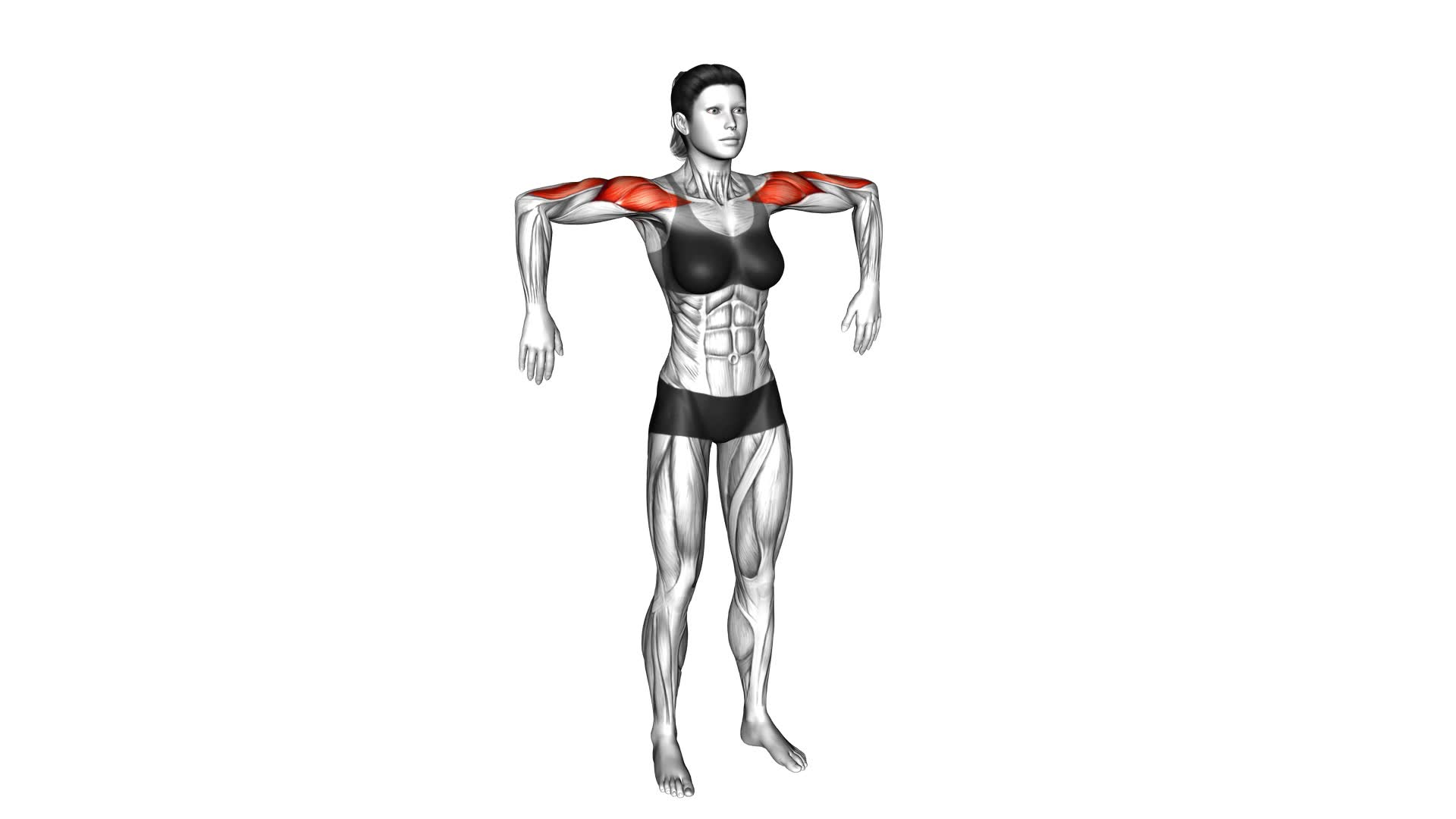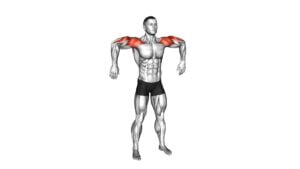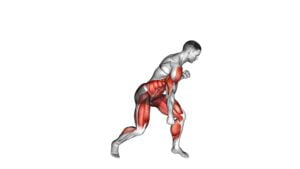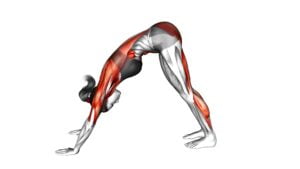Downward Punch (female) – Video Exercise Guide & Tips

Looking to strengthen your upper body and improve your punching power? Get ready to try the downward punch.
Watch This Exercise Video
In this video exercise guide, we'll show you the proper form and technique for this effective move. Whether you're a beginner or a seasoned fitness enthusiast, we've got modifications and variations to suit your fitness level.
Avoid common mistakes and maximize the effectiveness of your downward punch with our expert tips.
Let's punch it out!
Key Takeaways
- Targets upper body muscles including arms, shoulders, and core
- Increases overall body strength
- Provides stress relief and improves mental well-being
- Improves cardiovascular fitness and endurance
Benefits of the Downward Punch Exercise
By incorporating the downward punch exercise into your workout routine, you can experience a range of benefits that will enhance your strength and overall fitness. This exercise specifically targets your upper body, including your arms, shoulders, and core muscles. As you perform the downward punch, you engage these muscles, leading to increased overall body strength.
Additionally, the downward punch exercise can provide stress relief. The repetitive motion of punching downwards can help release tension and frustration, allowing you to release built-up stress and aggression. This exercise serves as a healthy outlet for negative emotions, helping to improve your mental well-being.
Furthermore, the downward punch exercise is an effective way to improve your cardiovascular fitness. As you perform the exercise, your heart rate increases, which improves your cardiovascular endurance and overall fitness level.
Incorporating the downward punch exercise into your workout routine can also enhance your coordination and balance. The controlled movements required during this exercise challenge your stability, helping to improve your overall coordination and balance.
Proper Form and Technique for the Downward Punch
To perform the downward punch exercise with proper form and technique, follow these guidelines.
First, stand with your feet shoulder-width apart and knees slightly bent. Keep your core engaged and your back straight throughout the exercise.
Next, raise your fists to shoulder level, keeping your elbows bent and tucked in close to your body.
As you initiate the downward punch, imagine striking an imaginary target in front of you. Start by extending your arm straight out in front of you, while rotating your wrist so that your palm faces the ground.
As you punch, exhale forcefully, engaging your core muscles for added power. Remember to keep your movements controlled and fluid. Avoid locking your joints or hyperextending your elbows. Keep your shoulders relaxed and avoid tensing up as this can lead to strain or injury.
Proper downward punch form involves using your entire body to generate power. Utilize the strength of your legs, hips, and core to drive the downward punch. This will help you maximize the effectiveness of the exercise and prevent unnecessary strain on your upper body.
Practice these downward punch techniques regularly to improve your strength, coordination, and overall fitness. As with any exercise, start with lighter weights and gradually increase the intensity as you become more comfortable and proficient.
Modifications and Variations for Different Fitness Levels
To modify and vary the downward punch exercise for different fitness levels, you can adjust the weight, speed, or range of motion of your punches. Here are some modifications and progressions you can try:
- Weight: If you're a beginner or have limited upper body strength, start with lighter weights or no weights at all. As you become more comfortable and stronger, gradually increase the weight of your punches. This will help challenge your muscles and promote progress.
- Speed: Adjusting the speed of your punches can also make the exercise more suitable for your fitness level. Beginners can start with slower punches, focusing on maintaining proper form and control. As you become more advanced, you can increase the speed, incorporating quick and powerful punches for a more intense workout.
- Range of Motion: Another way to modify the downward punch exercise is by adjusting the range of motion. Beginners can start with smaller, controlled punches that don't require a large range of motion. As you progress, you can gradually increase the range of motion, extending your punches further downward and engaging more muscles in the process.
Remember to listen to your body and progress at your own pace. These modifications and progressions will help you tailor the downward punch exercise to your fitness level and continue challenging yourself as you get stronger.
Common Mistakes to Avoid During the Downward Punch
When performing the downward punch exercise, it's important to avoid common mistakes that can hinder your progress and increase the risk of injury. One of the most crucial aspects to pay attention to is correct hand positioning. Many people tend to make the mistake of not aligning their hand properly, which can lead to strain on the wrist and hand, and potentially cause injuries. To avoid this, make sure your wrist is straight and your knuckles are in line with your forearm. This will help distribute the force evenly and reduce the risk of injury.
Another common mistake to avoid is rushing through the movement. It's important to maintain control and execute the downward punch with proper technique. Avoid swinging your arm too forcefully or jerking your body. Instead, focus on a controlled and smooth movement, engaging your core muscles for stability. This won't only prevent injuries but also ensure maximum effectiveness of the exercise.
Furthermore, it's crucial to avoid locking your elbow at the bottom of the punch. This can strain the joint and increase the risk of injury. Instead, keep a slight bend in your elbow throughout the movement to maintain a safe and stable position.
Tips for Maximizing the Effectiveness of the Downward Punch
To maximize the effectiveness of the downward punch, focus on generating power from your core muscles while maintaining proper form and technique. Here are some tips to help you maximize power and improve accuracy:
- Engage your core: Your core muscles are crucial for generating power in your punches. Make sure to engage your core by contracting your abdominal muscles and maintaining a strong posture throughout the movement.
- Rotate your hips: To generate maximum power, use your hips to drive the punch. As you punch downward, rotate your hips in the direction of the punch. This will add rotational force and increase the power behind your punch.
- Aim for accuracy: While power is important, accuracy is equally crucial. To improve your accuracy, focus on your target and visualize hitting it with precision. Practice punching at different angles and heights to enhance your ability to hit your target consistently.
Frequently Asked Questions
Are There Any Specific Muscles Targeted by the Downward Punch Exercise?
The downward punch exercise targets several specific muscles in your upper body. It primarily activates your chest, shoulders, and triceps.
This exercise can be modified by using different weights or resistance bands to increase or decrease the intensity.
Incorporating the downward punch into your workout routine can help improve upper body strength and tone your muscles. It's a great addition to any fitness regimen, providing numerous benefits for your overall strength and conditioning.
How Many Calories Can Be Burned by Performing the Downward Punch Exercise?
When you perform the downward punch exercise, you can burn a significant amount of calories. This exercise engages multiple muscle groups, including the arms, shoulders, and core, which leads to a higher calorie burn.
However, it's important to note that the exact number of calories burned will vary depending on factors such as your weight, intensity, and duration of the workout.
Additionally, if you have wrist injuries, there are modifications available to ensure a safe and effective workout.
Can the Downward Punch Exercise Be Modified for Individuals With Wrist Injuries?
If you have a wrist injury and need modifications for the downward punch exercise, there are alternative exercises you can try. It's important to protect your wrists and avoid putting too much strain on them.
Instead of punching downward, you can focus on exercises that strengthen your upper body without putting pressure on your wrists, such as push-ups or tricep dips. These exercises will still provide a good workout while being safer for your wrists.
Is It Necessary to Use Dumbbells or Resistance Bands While Performing the Downward Punch Exercise?
Using dumbbells or resistance bands while performing the downward punch exercise can provide several advantages. They add resistance, helping to build strength in your arms and shoulders. They also increase the intensity of the exercise, making it more challenging and effective.
However, if you don't have access to equipment, there are variations of the downward punch exercise that you can still do. These variations can involve using bodyweight or finding alternative objects to punch downwards.
Can the Downward Punch Exercise Help Improve Punching Power in Combat Sports?
The downward punch exercise can be a valuable addition to your training routine if you want to improve your punching power in combat sports. This exercise targets the muscles used in punching, helping to increase strength and explosiveness.
Conclusion
In conclusion, the Downward Punch exercise is a beneficial and effective way to strengthen your upper body and improve your fitness level.
By following proper form and technique, you can maximize the effectiveness of this exercise and avoid common mistakes.
Additionally, modifications and variations allow individuals of different fitness levels to participate.
Incorporating the Downward Punch into your workout routine can help you achieve your fitness goals and enhance your overall physical strength.

Author
Years ago, the spark of my life’s passion ignited in my mind the moment I stepped into the local gym for the first time. The inaugural bead of perspiration, the initial endeavor, the very first surge of endorphins, and a sense of pride that washed over me post-workout marked the beginning of my deep-seated interest in strength sports, fitness, and sports nutrition. This very curiosity blossomed rapidly into a profound fascination, propelling me to earn a Master’s degree in Physical Education from the Academy of Physical Education in Krakow, followed by a Sports Manager diploma from the Jagiellonian University. My journey of growth led me to gain more specialized qualifications, such as being a certified personal trainer with a focus on sports dietetics, a lifeguard, and an instructor for wellness and corrective gymnastics. Theoretical knowledge paired seamlessly with practical experience, reinforcing my belief that the transformation of individuals under my guidance was also a reflection of my personal growth. This belief holds true even today. Each day, I strive to push the boundaries and explore new realms. These realms gently elevate me to greater heights. The unique combination of passion for my field and the continuous quest for growth fuels my drive to break new ground.







